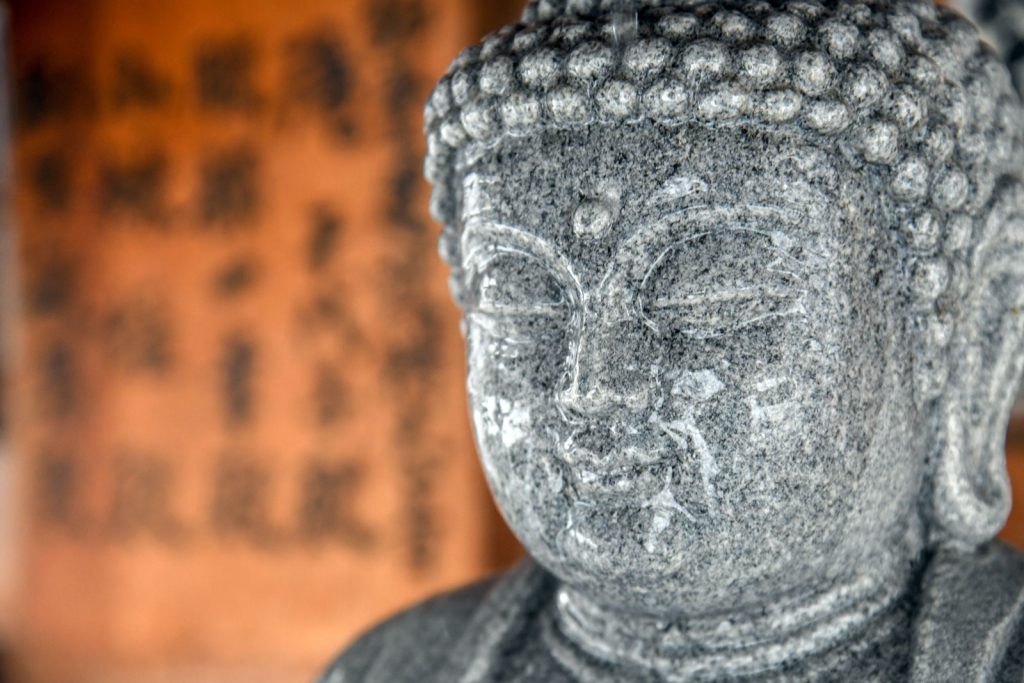When we start to meditate or to work with any kind of spiritual discipline, we often think that somehow we’re going to improve, which is a subtle aggression against who we really are. It’s a bit like saying, “If I jog, I’ll be a much better person.” “If I had a nicer house, I’d be a better person.” “If I could meditate and calm down, I’d be a better person.” Or the scenario may be that we find fault with others. We might say, “If it weren’t for my husband, I’d have a perfect marriage.” “If it weren’t for the fact that my boss and I can’t get on, my job would be just great.” And, “If it weren’t for my mind, my meditation would be excellent.”
But lovingkindness—maitri (Pali, metta)—toward ourselves doesn’t mean getting rid of anything. Maitri means that we can still be crazy, we can still be angry. We can still be timid or jealous or full of feelings of unworthiness. Meditation practice isn’t about trying to throw ourselves away and become something better. It’s about befriending who we are already. The ground of practice is you or me or whoever we are right now, just as we are. That’s what we come to know with tremendous curiosity and interest.
Curiosity involves being gentle, precise, and open—actually being able to let go and open. Gentleness is a sense of good-heartedness toward ourselves. Precision is being able to see clearly, not being afraid to see what’s really there. Openness is being able to let go and to open. When you come to have this kind of honesty, gentleness, and good-heartedness, combined with clarity about yourself, there’s no obstacle to feeling lovingkindness for others as well.
Why Meditate?
As a species, we should never underestimate our low tolerance for discomfort. To be encouraged to stay with our vulnerability is news that we can use. Sitting meditation is our support for learning how to do this. Sitting meditation, also known as mindfulness-awareness practice, is the foundation of bodhicitta training. [Bodhicitta is the wish to attain enlightenment and to bring all beings to the same awakened state]. It is the home ground of the warrior bodhisattva.
Sitting meditation gives us a way to move closer to our thoughts and emotions and to get in touch with our bodies. It is a method of cultivating unconditional friendliness toward ourselves and for parting the curtain of indifference that distances us from the suffering of others. It is our vehicle for learning to be a truly loving person.
Gradually, through meditation, we begin to notice that there are gaps in our internal dialogue. In the midst of continually talking to ourselves, we experience a pause, as if awakening from a dream. We recognize our capacity to relax with the clarity, the space, the open-ended awareness that already exists in our minds. We experience moments of being right here that feel simple, direct, and uncluttered.
This coming back to the immediacy of our experience is training in unconditional, or absolute, bodhicitta. By simply staying here, we relax more and more into the open dimension of our being. It feels like stepping out of a fantasy and discovering simple truth.
The Six Points of Posture:
Sitting meditation begins with good posture. Awareness of the six points of posture is a way to be really relaxed and settled in our body. Here are the instructions:
- Seat: Whether you’re sitting on a cushion on the floor or in a chair, the seat should be flat, not tilting to the right or left, or to the back or front.
- Legs: The legs are crossed comfortably in front of you—or, if you’re sitting in a chair, the feet are flat on the floor, with the knees a few inches apart.
- Torso: The torso (from the head to the seat) is upright, with a strong back and an open front. If sitting in a chair, it’s best not to lean back. If you start to slouch, simply sit upright again.
- Hands: The hands are open, with palms down, resting on the thighs.
- Eyes: The eyes are open, indicating the attitude of remaining awake and relaxed with all that occurs. The eye gaze is slightly downward and directed about 4 to 6 feet in front of you.
- Mouth: The mouth is very slightly open so that the jaw is relaxed and air can move easily through both the mouth and nose. The tip of the tongue can be placed on the roof of the mouth.
Each time you sit down to meditate, check your posture by running through these six points. Anytime you feel distracted, bring your attention back to your body and these six points of posture.
⧫
From Comfortable with Uncertainty © 2002 by Pema Chödrön and Emily Hilburn Sell. Reprinted in arrangement with Shambhala Publications, Inc. Boulder, CO. www.shambhala.com
This article was originally published on March 21, 2018
Thank you for subscribing to Tricycle! As a nonprofit, we depend on readers like you to keep Buddhist teachings and practices widely available.
